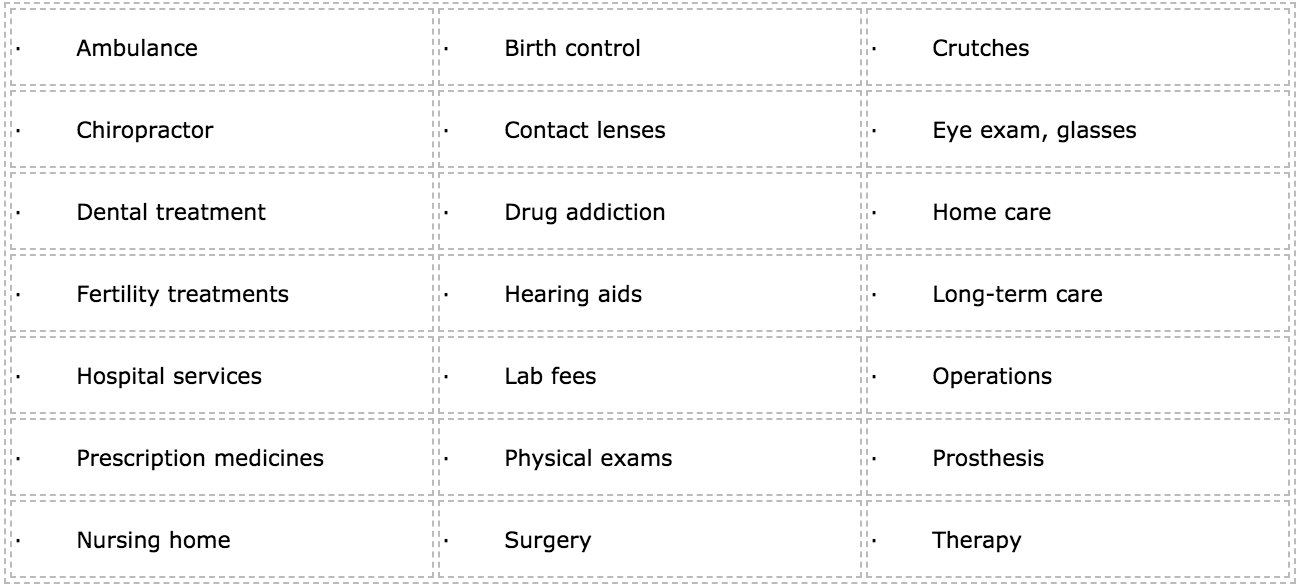Now that more investments appropriate for long-term savings are becoming available in Health Savings Accounts (HSAs), many financial experts are advocating saving in an HSA in addition to an employer-sponsored retirement plan or IRA.
An HSA is a tax-exempt custodial account that may be established by individuals covered under a high deductible health plan (HDHP).
What are the tax benefits of an HSA?
- Tax-deductible contributions,
- Tax-deferred investment earnings, and
- Tax-free distributions if used to pay for qualified medical expenses.
While many savers are using HSAs to save for medical expenses in retirement, you may also find it beneficial to use some of your tax-free HSA money to pay for medical expenses that arise before you retire.
Using an HSA
Qualified Medical Expenses and HSAs
HSAs were created to help individuals pay health insurance deductibles until the deductible is met and out-of-pocket expenses that are not covered by an HDHP. If an HSA distribution is used to pay for a “qualified medical expense,” you will never pay tax on those assets.
What Are the Requirements of a Health Savings Account
You can always take tax-free distributions for qualified medical expenses, even if you are no longer eligible to fund your HSA. But the medical expense must meet the following requirements:
- Cannot be reimbursed from another plan or arrangement
- Must be incurred after the HSA was established
- Generally, qualifies for the federal income tax deduction for medical or dental expenses (see IRS Publication 502, Medical and Dental Expenses)
A qualified medical expense may be incurred by you, your spouse or your dependents, even if your spouse or dependent is not eligible to have an HSA.
How to Use an HSA: Examples
Medical expenses are the costs for diagnosis, cure, mitigation, treatment, or prevention of disease for any part or function of the body. This includes payments for medical services rendered by physicians, surgeons, dentists, and other medical practitioners, as well as the cost of equipment, supplies, and diagnostic devices.
Here are just some examples of health care expenses that may be paid with HSA assets:

Health insurance premiums are generally not counted as qualified medical expenses, unless they are for
- Long-term care insurance,
- Health care continuation coverage (such as coverage under COBRA),
- Health care coverage while receiving unemployment compensation under federal or state law, and
- Medicare and other health care coverage for those ages 65 or older (other than premiums for a Medicare supplemental policy, such as Medigap).
What Happens With Distributions Not Taken to Pay for Qualified Medical Expenses?
If you take a distribution from your HSA and do not use it to pay a qualified medical expense, you must include the gross distribution amount in your taxable income for the year and pay an additional 20% excise tax.
The additional 20% tax does not apply if you are age 65 or older, disabled or deceased.
This means that if you want to use your HSA money for anything other than medical expenses after age 65, you will have to include it in taxable income but will not have to pay the additional 20% tax.
Keep Records of Your HSA Activity
You must report your HSA deposits and withdrawals on Form 8889, Health Savings Accounts, and file it with your Form 1040 each year. You should keep records to show that distributions were used to pay or reimburse qualified medical expenses, and that the expenses hadn’t been previously paid or reimbursed from another source or taken as an itemized deduction in any year.
You can find more information on the rules for HSAs in IRS Publication 969, Health Savings Accounts and Other Tax Favored Health Plans.
To learn more about Mainstar Trust HSAs: